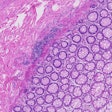
When it comes to ruling out pulmonary embolism (PE) in high-risk patients, hospitals should use diagnostic strategies based on adapted D-dimer thresholds, which are considered safe and efficient for making such diagnoses, according to research published December 14 in the Annals of Internal Medicine.
But instead of using different strategies on different patients, hospitals should standardize one strategy for their institution's use to gain the most benefit, wrote Dr. Frederikus Klok, PhD, of the Leiden University Medical Center in the Netherlands, and colleagues. The researchers also indicated that using such tests would reduce the need for clinical imaging.
The recommended diagnostic approach when patients are suspected of having acute PE usually involves making a standardized assessment of the clinical pretest probability for PE by using a validated clinical decision rule such as the Wells rule (a risk stratification score and clinical decision rule), the revised Geneva score, or the YEARS algorithm and combining the rule with D-dimer testing.
A nonhigh clinical probability combined with a normal D-dimer test safely rules out acute PE, without imaging. With the recent introduction and validation of D-dimer thresholds dependent on age or clinical pretest probability, the proportion of patients requiring an imaging test has decreased significantly.
There has been some concern that these recommended approaches may be less safe and efficient among certain subgroups of patients, such as those with cancer, individuals with a history of venous thromboembolism, and elderly patients or inpatients, even though the overall safety and efficiency of these strategies have been demonstrated in large management studies, the authors stated.
Investigators undertook an international systematic review and individual-patient data meta-analysis (IPDMA), examining the individual patient data of 20,553 patients with suspected PE from 16 studies. They evaluated the safety and efficiency of the Wells and revised Geneva scores combined with fixed and adapted D-dimer thresholds, as well as the YEARS algorithm, to rule out acute PE across subgroups of high-risk patients.
They found both efficiency and predicted failure rates were generally greatest for strategies with adapted D-dimer thresholds. The considerable increase in efficiency with the use of adapted D-dimer thresholds was highest in the patient subgroups, in which efficiency potentially could be increased up to threefold. Yet this was accompanied by predicted failure rates of from 2% to 4%, the authors wrote.
A higher failure rate would occur in groups that have a higher PE risk, based on the theorem of Bayes. The presence of differential verification bias, in particular for classifying fatal events and subsegmental PE cases, probably overestimated the predicted failure rates of strategies with adapted D-dimer thresholds in their IPDMA, the scientists stated.
The researchers concluded that all of the strategies examined for ruling out PE in their IPDMA could be considered safe across the predefined patient subgroups, with pretest probability-dependent D-dimer thresholds having not only the highest efficiency but also the highest predicted failure rate.



















